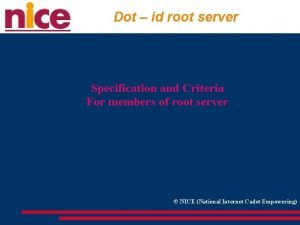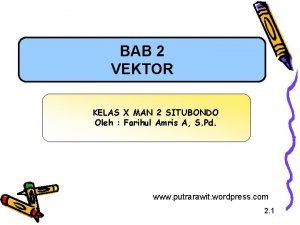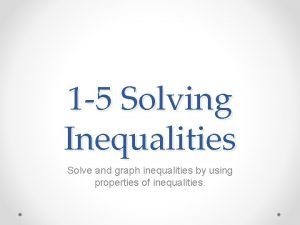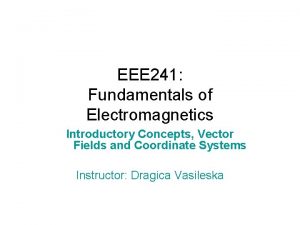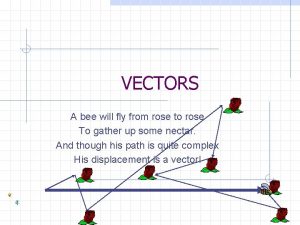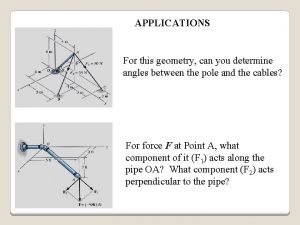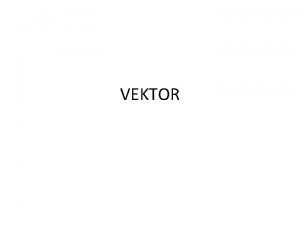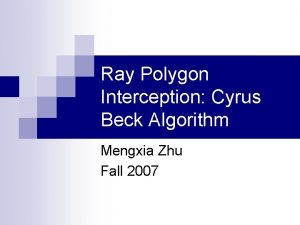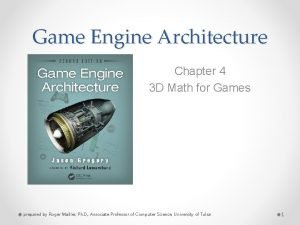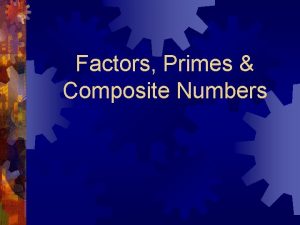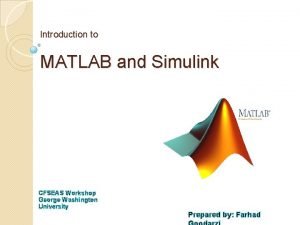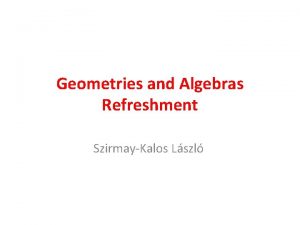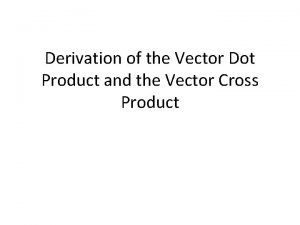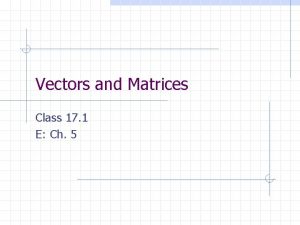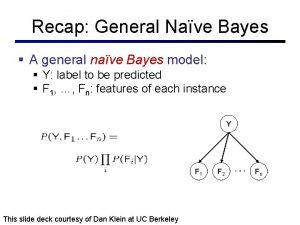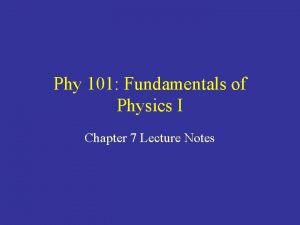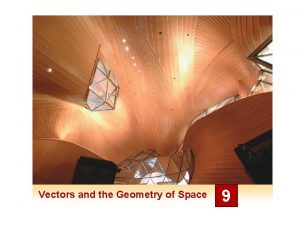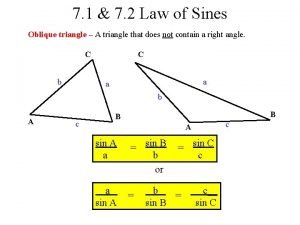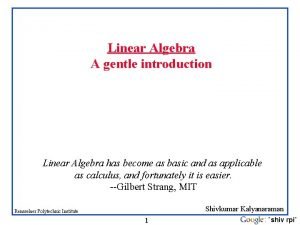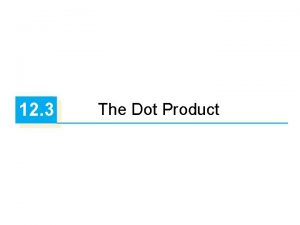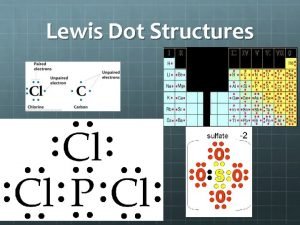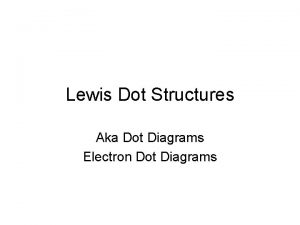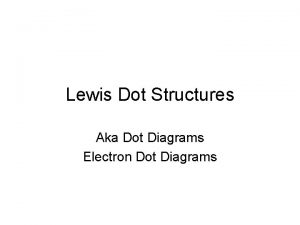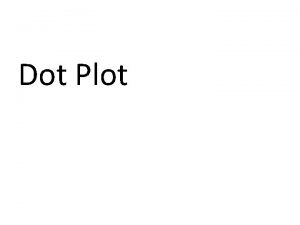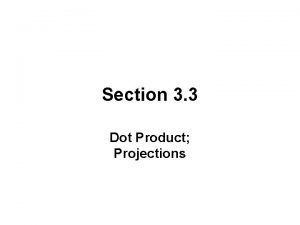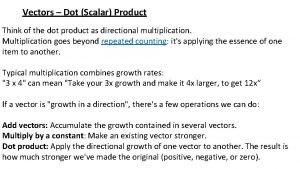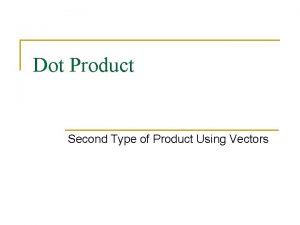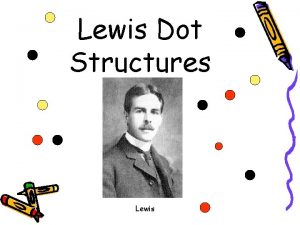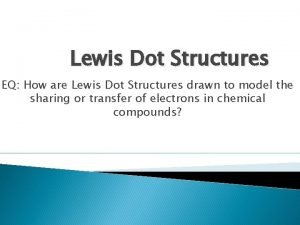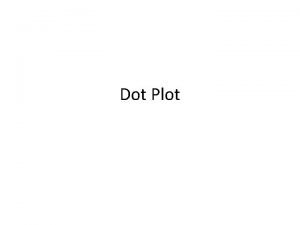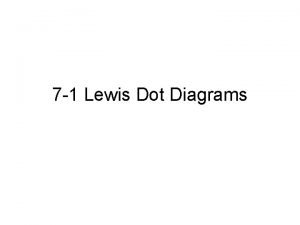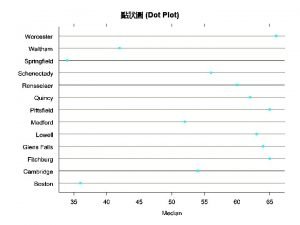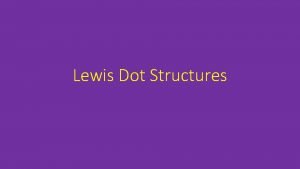The Dot Product The dot product F G
























- Slides: 24

The Dot Product The dot product F ·G of F and G is the real number formed by multiplying the two first components, then the two second components, then the two third components, and adding these three numbers. If F=a 1 i+b 1 j+c 1 k and G=a 2 i+b 2 j+c 2 k, then F ·G=a 1 a 2 +b 1 b 2 +c 1 c 2. Again, this dot product is a number, not a vector. For example,


• Angle between two Vectors • The dot product can be used to find an angle between two vectors. • Apply this to the vector triangle , which has sides of length a = G , • b = F , and c =G−F.

• Orthogonal Vectors • Two nonzero vectors F and G are orthogonal (perpendicular) when • the angle θ between them is π/2 radians. This happens exactly when • cos(θ)=0= F ·G • which occurs when F ·G=0. It is convenient to also agree that O is orthogonal to every vector. With this convention, two vectors are orthogonal if and only if their dot product is

• EXAMPLE 6. 4 • Let F=− 4 i+j+2 k, G=2 i+4 k and H=6 i−j− 2 k. • • Then F ·G=0, so F and G are orthogonal. • But F · H and G · H are not zero, so F and H are not orthogonal and G and H are not • orthogonal.

Vector projection • The projection of v onto u is a vector proj v in the direction of u having magnitude equal to the length of the perpendicular projection of the arrow representing v onto the line along the arrow representing u. • This projection is done by constructing a perpendicular line from the • tip of v onto the line through u. • θ is the angle between v and u u

To obtain a vector in the direction of u and of length d, divide u by its length to obtain a unit vector, then multiply this vector by d. Therefore,

• Orthogonality is also useful for determining the equation of a plane in 3 -space. • Any plane has an equation of the form ax +by +cz =d. • As suggested by Figure 6. 12, if we specify a point on the plane and a vector orthogonal to the plane, then the plane is completely determined. • This strategy is explained in the following example

• Example: • We will find the equation of the plane P containing the point (− 6, 1, 1) and orthogonal to the vector N=− 2 i + 4 j + k. Such a vector N is said to be normal to P and is called a normal vector to P. • Here is a strategy. Because (− 6, 1, 1) is on P, a point (x, y, z) is on P exactly when the vector between (− 6, 1, 1) and (x, y, z) lies in P. But then (x +6)i+(y − 1)j+(z − 1)k must • be orthogonal to N, so N· ((x +6)i+(y − 1)j+(z − 1)k)=0. • Then • − 2(x +6)+4(y − 1)+(z − 1)=0, • or • − 2 x +4 y +z =17. • This is the equation of P.

• Problems A. In each of Problems 1 through 6, compute the dot product of the vectors and the cosine of the angle between them. Also determine if the vectors are orthogonal. • • • 1. i, 2 i− 3 j+k 2. 2 i− 6 j+k, i−j 3. − 4 i− 2 i+3 k, 6 i− 2 j−k 4. 8 i− 3 j+2 k, − 8 i− 3 j+k 5. i− 3 k, 2 j+6 k 6. i+j+2 k, i−j+2 k

• B. find the equation of the plane containing the given point and orthogonal • • • to the given vector. 7. (− 1, 1, 2), 3 i−j+4 k 8. ( − 1, 0, 0), i− 2 j 9. (2, − 3, 4), 8 i− 6 j+4 k 10. (− 1, − 5), − 3 i+2 j 11. (0, − 1, 4), 7 i+6 j− 5 k 12. ( − 2, 1, − 1), 4 i+3 j+k • C. Find the projection of v onto u. • 13. v=i−j+4 k, u=− 3 i+2 j−k • 14. v=5 i+2 j− 3 k, u=i− 5 j+2 k • 15. v=−i+3 j+6 k, u=2 i+7 j− 3 k

• CROSS PRODUCT • The dot produces a scalar from two vectors. • The cross product produces a vector from two vectors. • Let F=a i+b j+c k and G=a i+b j+c k. The cross product of F with G is the vector F×G defined by • F×G = (b c −b c ) i+(a c −a c ) j+(a b −a b ) k. • Here is a simple device for remembering and computing these components. Form the determinant: 1 1 1 2 1 2 2 1 1 2 2 2 1

Properties of Cross product

• Property (1) of the cross product follows from the fact that interchanging two rows of a determinant changes its sign. In computing F×G, the components of F are in the second row of the determinant, and those of G in the third row. These rows are interchanged in computing G×F. • For property (2), compute the dot product F · • (F×G) =a [b c −b c ]+b [a c −a c ]+c [a b −a b ]=0. Therefore, F is orthogonal to F×G. Similarly, G is orthogonal to F×G. 1 1 2 2 1 1 2 2 1 • To derive property (3), suppose both vectors are nonzero and recall that • where θ is the angle between F and G. Now write


Problems A. compute F×G and G×F 1. F=− 3 i+6 j+k, G=−i− 2 j+k 2. F=6 i−k, G=j+2 k 3. F=2 i− 3 j+4 k, G=− 3 i+2 j 4. F=8 i+6 j, G=14 j

The Vector Space

• Example






 192 dot 168 dot 1 dot 1
192 dot 168 dot 1 dot 1 Sifat cross product
Sifat cross product Perkalian silang
Perkalian silang Inner product outer product
Inner product outer product Dot net vs java
Dot net vs java 1-5 solving inequalities
1-5 solving inequalities Dot product
Dot product Dot product
Dot product Is dot product commutative
Is dot product commutative Vektor baris adalah
Vektor baris adalah Dot product in cyrusbeck algorithm is:
Dot product in cyrusbeck algorithm is: Dot product computer science
Dot product computer science Product security maturity model
Product security maturity model Is 63 prime or composite
Is 63 prime or composite Simulink differential equation
Simulink differential equation What is the meaning of dot product
What is the meaning of dot product Find the scalar and vector projections of b onto a.
Find the scalar and vector projections of b onto a. Dot product derivation
Dot product derivation Cross product ti 89
Cross product ti 89 Dot product
Dot product Power is equal to the dot product of force and: phy101
Power is equal to the dot product of force and: phy101 Vectors and the geometry of space
Vectors and the geometry of space Oblique triangle
Oblique triangle Matrix dot product
Matrix dot product Perp dot product
Perp dot product
